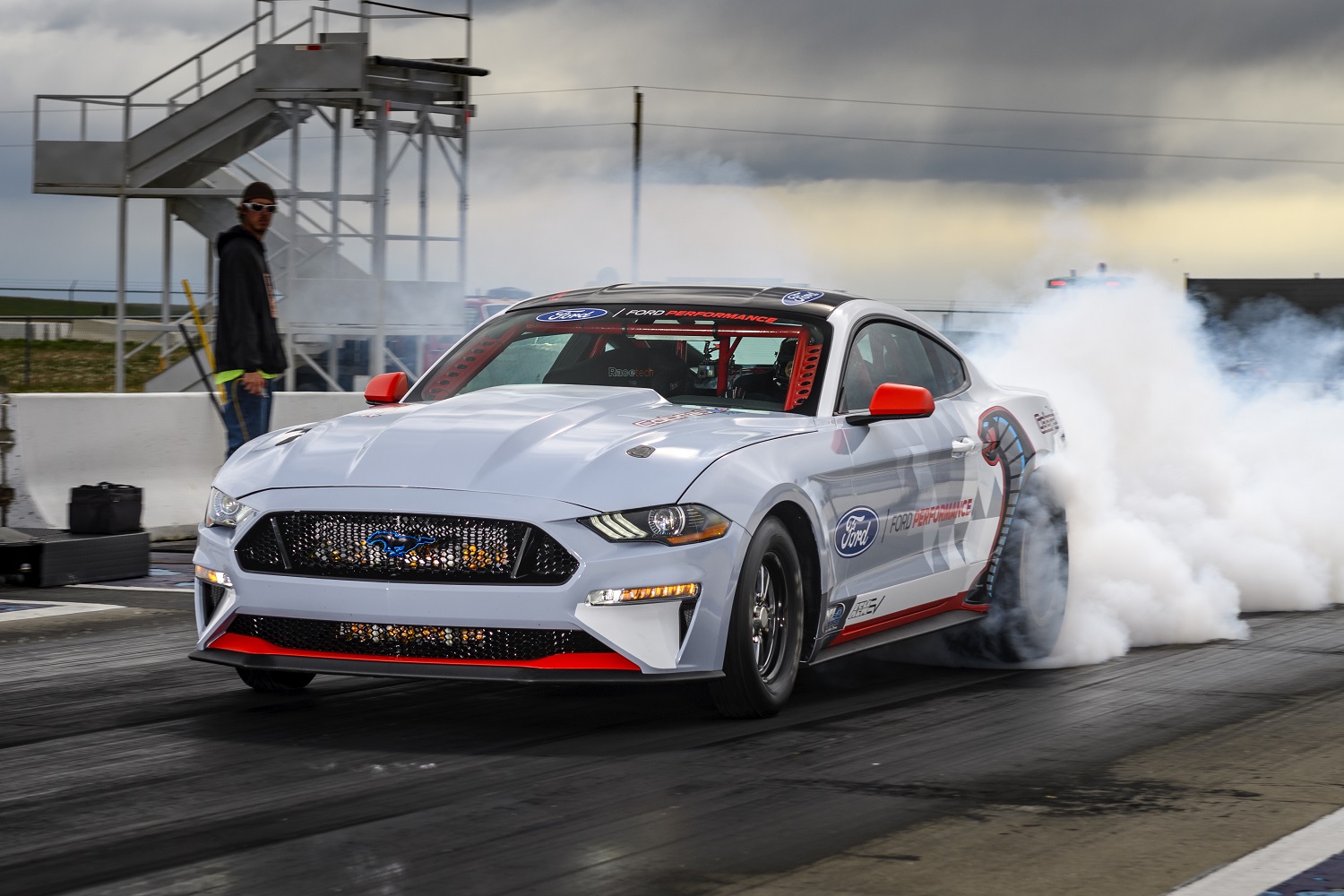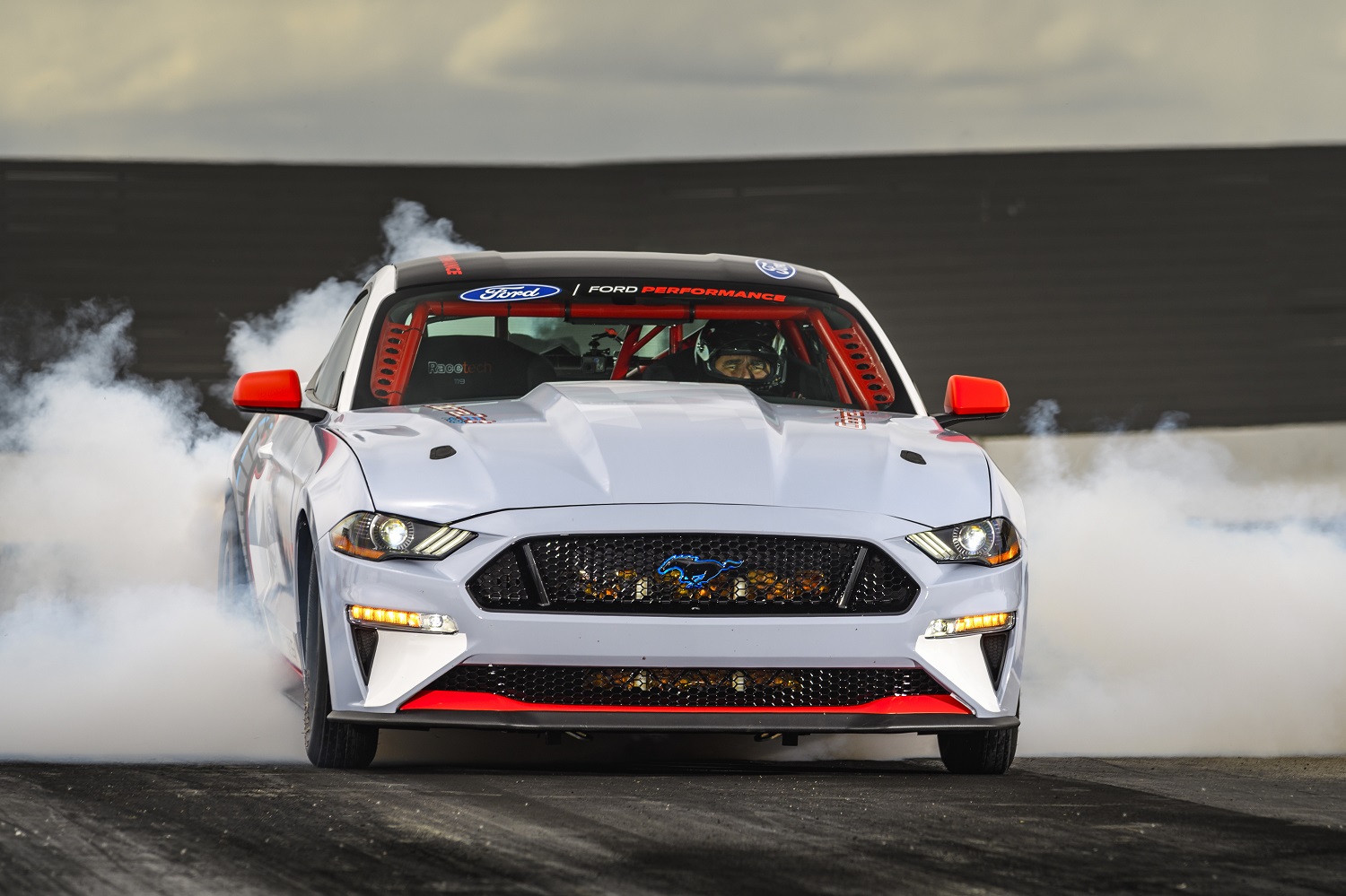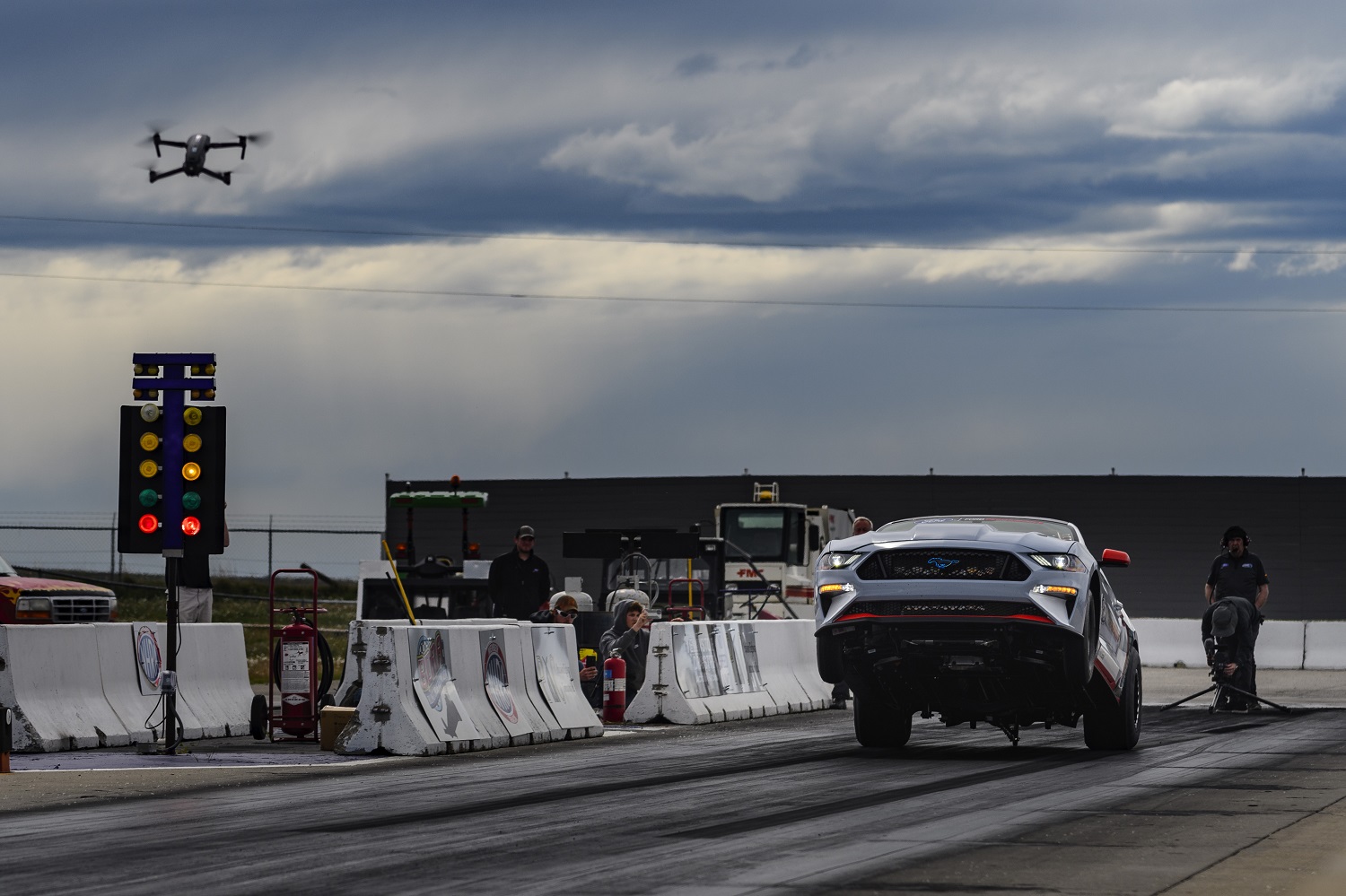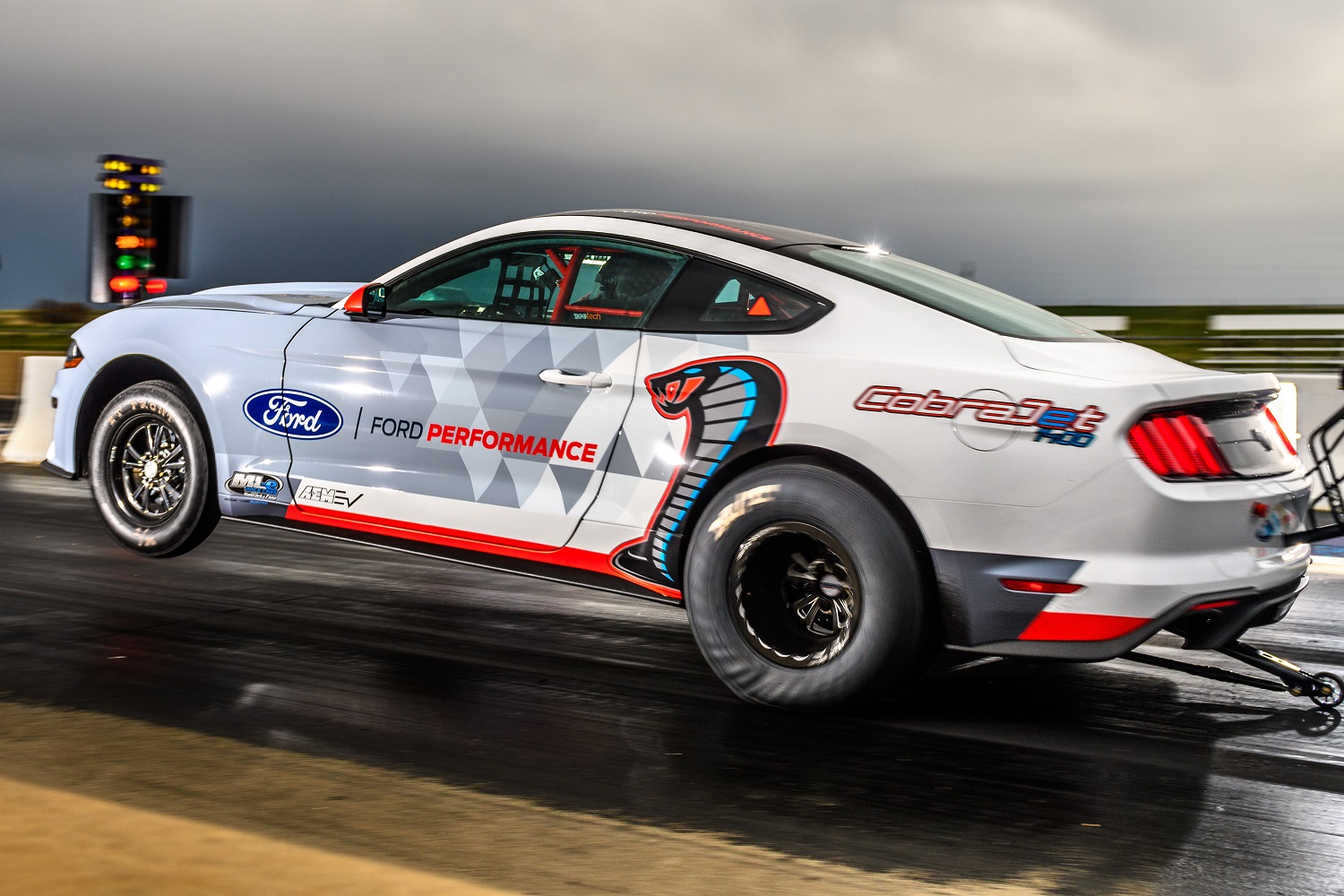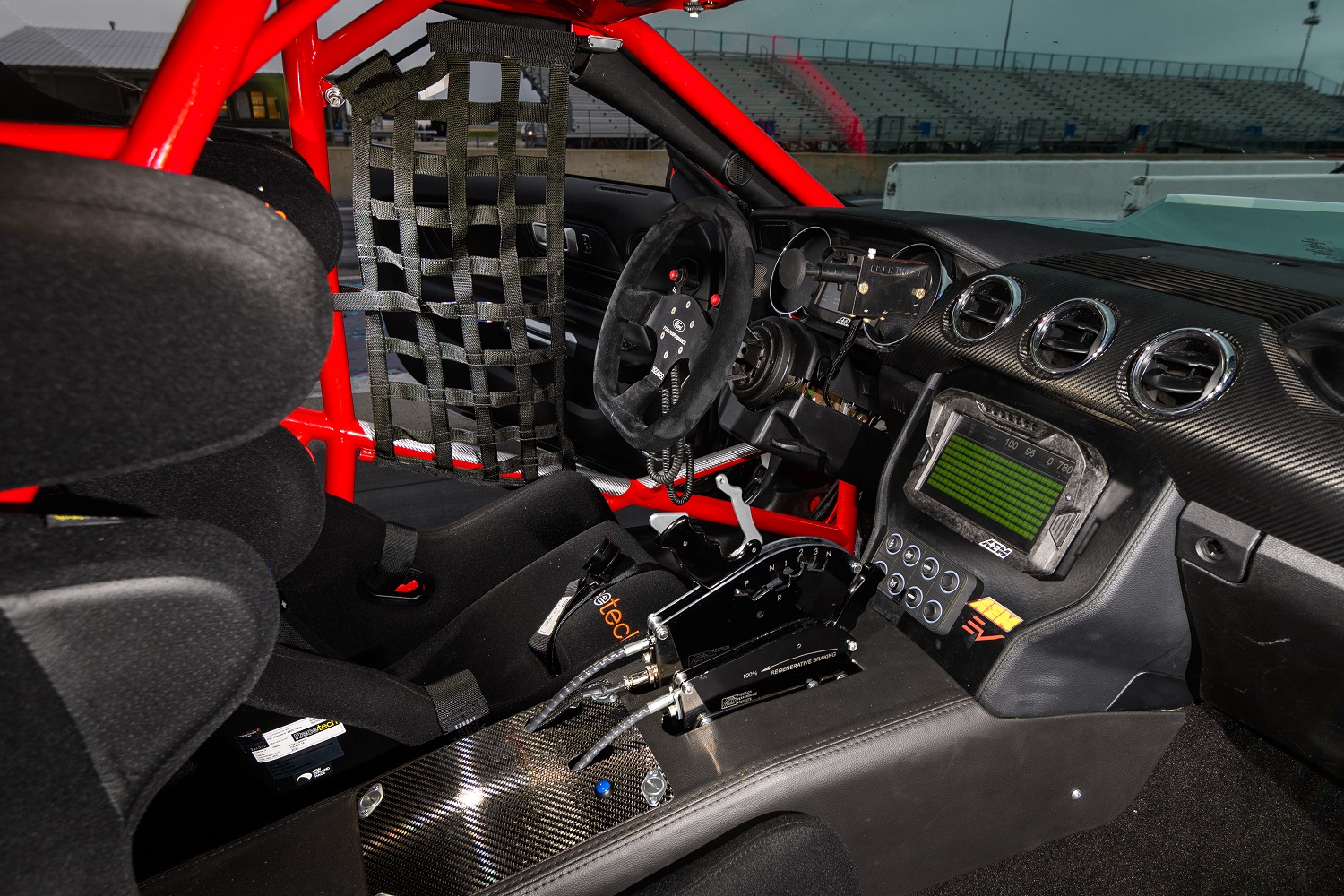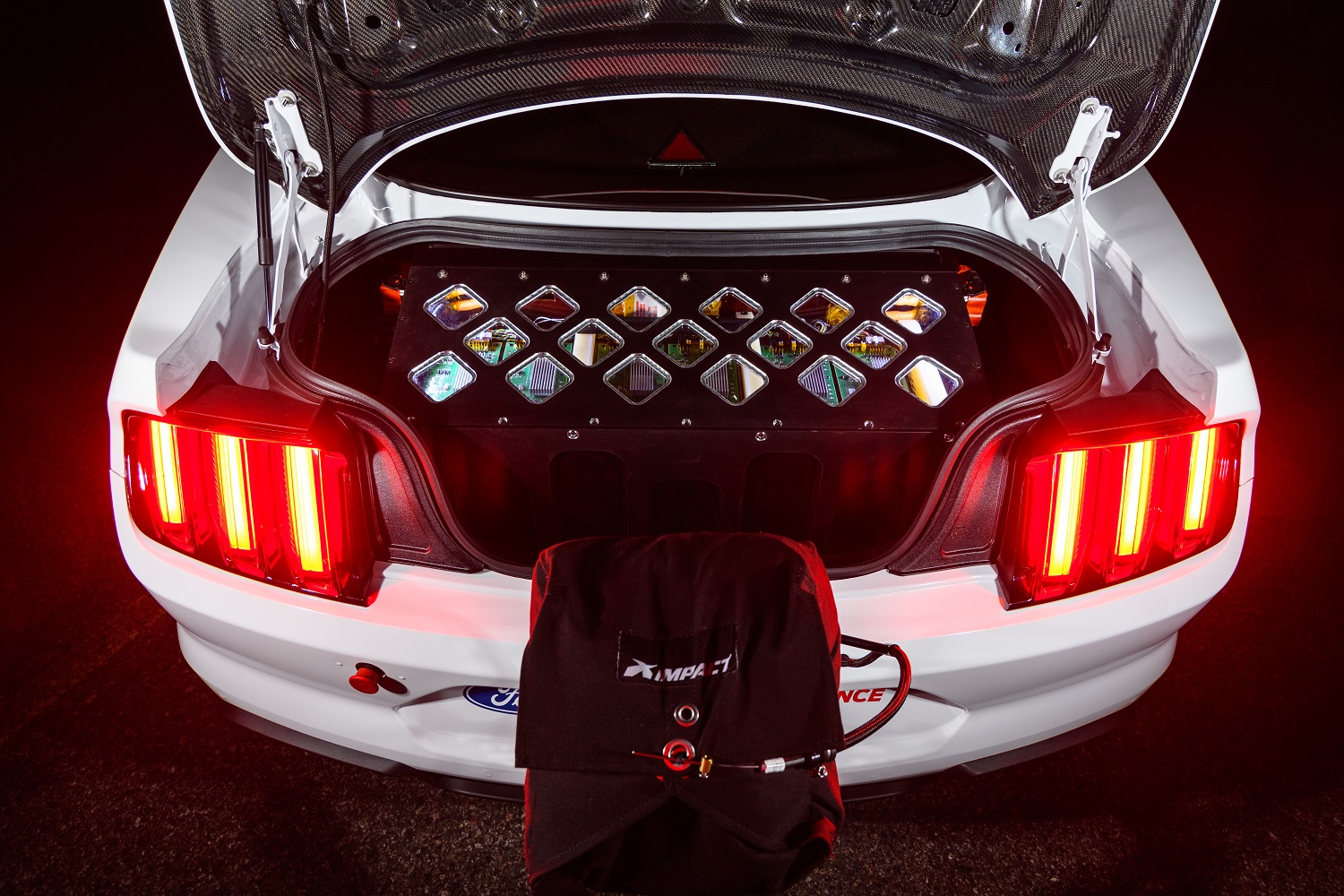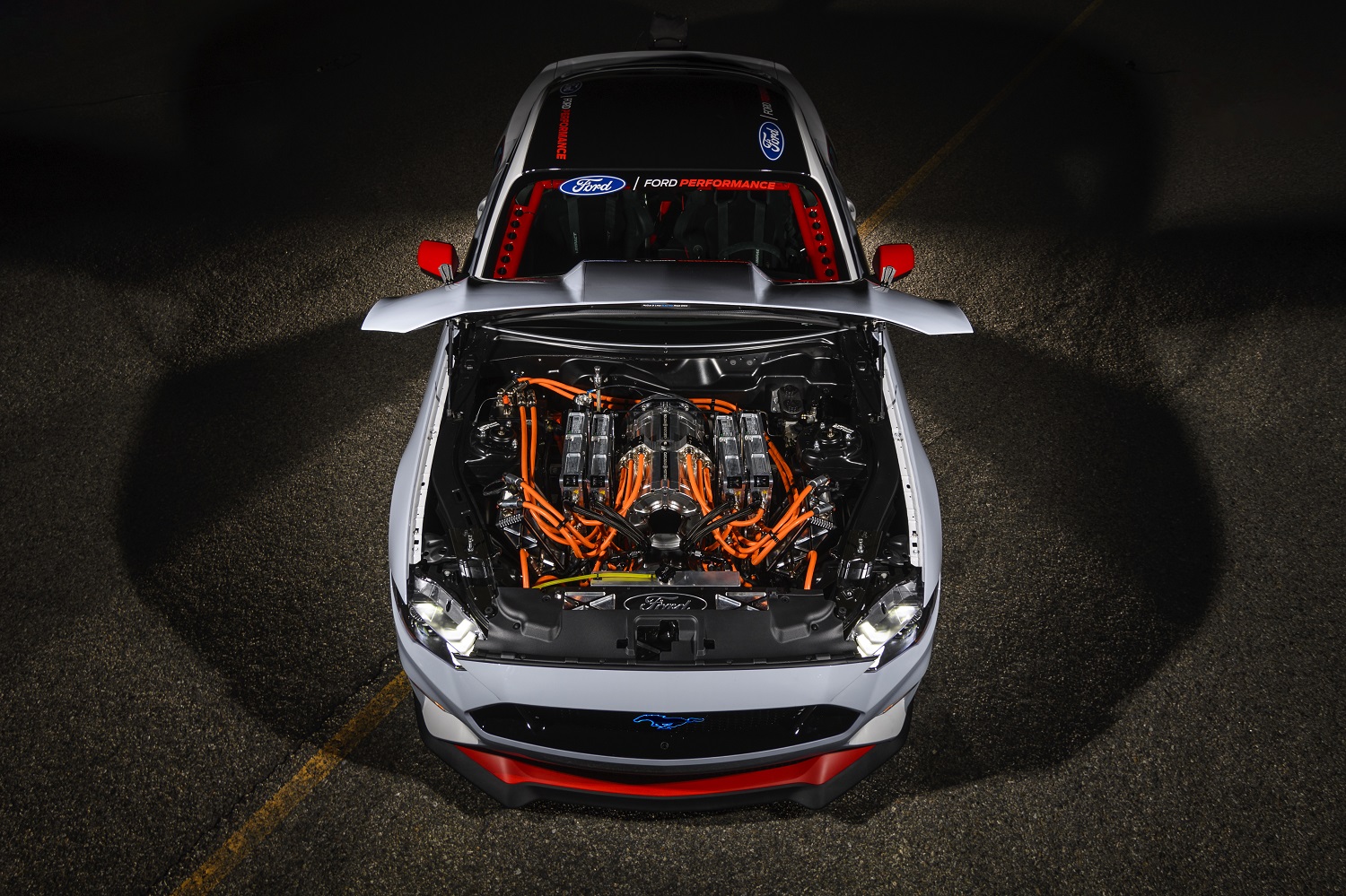Ford defiantly argued a Mustang doesn’t need to have a turbocharged four-cylinder engine or a big V8 under the hood to honor the nameplate’s heritage when it introduced the electric Mach-E. It took the emblematic model even further into electrification territory by building a battery-powered, Mustang-based dragster named Cobra Jet.
Hardcore, dyed-in-the-wool Mustang fans will recognize the Cobra Jet name because it denoted a mighty, 7.0-liter V8 engine in the late 1960s. Fast forward to 2020, and it proudly designates an electric dragster whose output checks in at a monstrous 1,400 horsepower and 1,100 pound-feet of instant torque, though Ford revised the first figure in September 2020. Its total output is 1,502 hp, a jaw-dropping number that puts it on par with the Bugatti Chiron.
The mammoth-sized Mickey Thompson rear tires help transfer the powertrain’s output to the pavement, though I doubt they’ll last long. Walking around to the back reveals a wheelie bar that keeps the shiny side up at full throttle, and a parachute the driver needs to deploy at the end of a run in order to stop before running out of asphalt.
None of it is for show. The Cobra Jet 1400 whirs through the quarter-mile in 8.27 seconds, so a few tenths of a second faster than its V8-powered predecessor, which logged a time of about 8.5 seconds. Its trap speed is 168 mph.
Power for this monster of an EV comes from four electric motors capable of spinning at up to 10,000 rpm. Additional technical details are few and far between. We don’t know what kind of battery pack it’s equipped with, or how many times it can blast down the drag strip before it needs to find a plug. Don’t expect it to share a significant number of parts with the regular-production Mustang or the electric Mach-E that’s right around the corner. This is a purpose-built racer, fitted with a single seat for the driver, a full roll cage, and specific instrumentation.
Ford will show enthusiasts what the Cobra Jet 1400 is capable of during the National Hot Rod Association (NHRA) U.S. Nationals taking place from September 4 to September 6, 2020. It will race against V8-powered dragsters. Your guess is as good as mine when it comes to what will happen after that. The odds of it seeing the inside of a Ford showroom are extremely low, but the lessons learned from the project could help engineers electrify the next-generation Mustang, tentatively due out in 2023. Unverified rumors claim a V8-electric hybrid system will join the list of available powertrains for the first time, and this dragster could set the foundations it will be built on.
“The opportunities to learn with the Mustang Cobra Jet 1400, as well as the Mustang Mach-E 1400 we recently introduced, gives us great insight into what may be possible in high-performance electric vehicles for Ford going forward. We are very interested in continuing to work with the NHRA to determine how electrification can be part of the sport,” hinted Mark Rushbrook, the director of Ford Performance Motorsports, in a statement.
If this project sounds familiar, it’s likely because arch-nemesis Chevrolet introduced an electric, Camaro-like dragster named eCOPO in 2018. It tried to sell the one-off car in 2019 but failed to find a buyer for it.
Updated September 4, 2020: Added the latest information about the Cobra Jet 1400.
